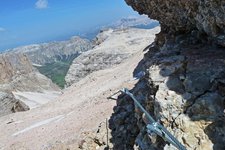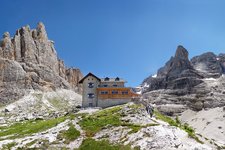Ticks are parasites that can be found in the forests of the Trentino between March and October. Below you will find some useful information about what you can do to avoid a tick bite
What are ticks?
The tick is a small parasite, roughly the size of a pinhead, and usually dark brown. It feeds on the blood of animals or humans and can not fly. Instead, these animals camouflage themselves in vegetation and wait to attach to a host as it brushes past. A tick bit is often not noticed immediately and does not cause instant harm, but it can be dangerous as they can transmit infections. In Trentino, they transmit two main diseases: Tick-Borne encephalitis (TBE), for which a vaccine is available and Lyme disease (also known as Borreliosis).
**Where and when can you find ticks?
Ticks prefer damp places with dense grass, in woodlands, and among shrubs. They are typically found at altitudes below 1,500 metres a.s.l. and are active throughout Trentino from spring to autumn, especially when temperatures exceed 10°C.
Preventing tick bites:.
- Avoid walking through tall grass and close to bushes
- Wear clothing that covers your body well, ensuring it's snug at the ankles, wrists, and neck (e.g., long trousers, long-sleeved and is tight around the ankles, wrists and neck (long trousers, long-sleeved shirts)
- Choose light-coloured clothing to spot ticks more easily.
- Apply tick repellent to exposed skin, clothing, and footwear.
- Check your body thoroughly after outdoor activities. Ticks can take up to 24 hours to find a suitable spot to bite and often prefer areas where the skin is thinner, such as the head, groin, armpits, and abdomen.
What to do if a tick bites you?
If you find a tick has bitten you, it's important to remove it as soon as possible. The bite site might appear as a red spot. It is recommended that you go to the nearest emergency room, where the tick can be removed properly and any necessary medical advice or treatment can be provided.

































